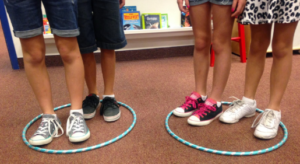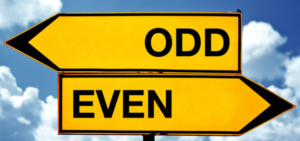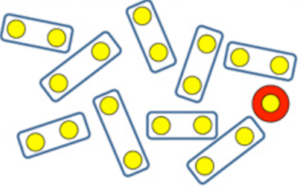If you add two odd numbers will your answer be an even or odd number? What about two even numbers? Will those results always be true? The idea of evens and odds may seem simple but it is a powerful foundational concept. They are found everywhere in our daily lives. Shoes and socks are sold in pairs. Football and basketball teams play with an odd number of players from each team. But what is the big deal? Why is it important for our kids to know this concept? Well, children will use the idea of equal groups as a foundation for multiplication in third grade.
There are multiple ways for children to gain a strong understanding of evens and odds. Separating groups of objects into groups of 2 or separating into 2 equal groups with none left over are two important ways kids learn even. If there is one item left over the amount is odd. It builds lasting understanding when child explore with objects and begin to find patterns. Children will then make the connection between the concrete objects to drawn picture representations and later relate this concept to the doubles addition facts (i.e. 8 + 8 = 16 or 3 + 3 = 6).
Here are a few ways that pairs of objects can be organized or placed in two equal groups.

To play “Find Odd or Even game” try out this link. Encourage the use of objects or drawings to represent the amounts.

